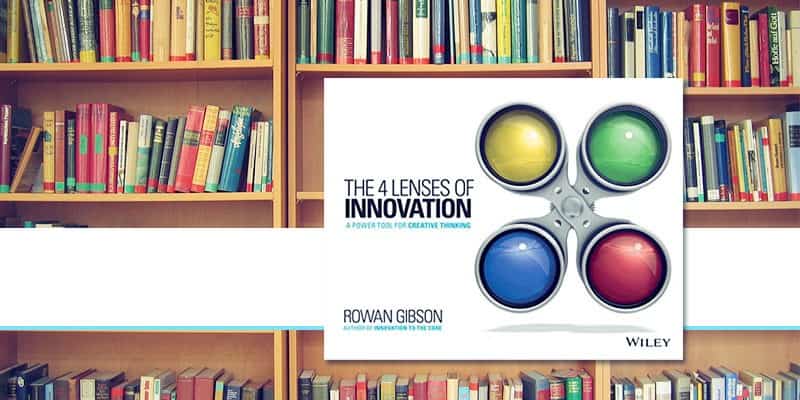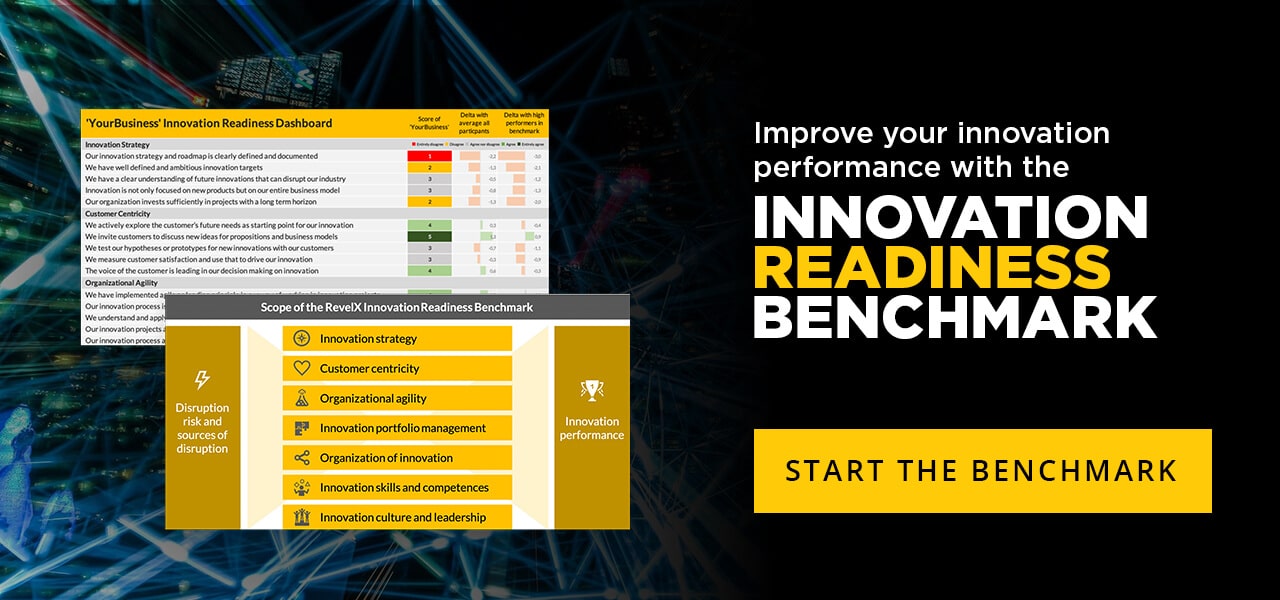In the first article in this series on creative tools to provoke creative ideas we looked at what ideas are and the importance of creating connections to provoke different ideas and then a more detailed look at the first model, Ten Types of Innovation. Read it here.
In this article, we will look at the second model, the Four Lenses of Innovation, but before we get too involved in the detail of the model, let’s pause for a moment to consider how and where we might run the sessions to brainstorm ideas and what affect that might have on the type and diversity of ideas we might get.
We are working on the hypothesis here that you want the ‘un-obvious’ and novel ideas and that a good way of getting the un-obvious is to ask for them in an un-obvious way.
Group brainstorming for ideas often is conducted in a highly ineffective way. At least, what most of us would understand to be the normal format for a brainstorming sessions; a senior standing by a flipchart with the pen, ‘no idea is silly idea’, only one person speaking at a time…..you get the idea. It is perhaps the most over-used and ineffectual business tools ever.

If structured properly, brainstorming may work very well. That is why we suggest you first re-think how you conduct these ‘group-think’ sessions.
Psychologists usually offer four explanations for the failure of most group brainstorming sessions (Furnham, 2000):
- Social loafing: in a group, some individuals tend to sit back and let others do the work (extraverts love these sessions, introverts hate them regardless of whether they have good ideas)
- Production blocking: only one person can talk or produce an idea at once, while the others sit passively while the ideas are captured on the flipchart
- Social anxiety: People worry about other team members’ views of their ideas. This is also referred to as evaluation apprehension. Similarly, when team members perceive that others have more expertise, their performance declines. This is especially problematic for introverted and less confident individuals.
- Regression to the mean: This is the process of downward adjustment whereby the most talented group members end up matching the performance of their less talented counterparts. This effect is well known in sports – if you practice with someone less competent than you, your competence level declines and you sink to the mediocrity of your opponent.
How then should you run these sessions?
Here’s a checklist of things to consider:
- The location can have a big impact on creativity so, where you can, we urge you to deliberately disrupt the location – the boardroom probably isn’t the most inspiring place. Why not go outside for a walk?
- Regardless of whether you go for a walk or not, GO for a ‘metaphorical’ walk. Step into the shoes of the ‘customer’ for the ideas so you can, as much as possible, experience what they experience
- Where possible, use props. Remember, ideas happen when we make connections so if you can use visual or even better
- To avoid the ‘production blocking’ problem, get the people to write their ideas on sticky-notes as and when they occur to them rather than shouting them out
- Avoid the NO’s or other critical remarks, like done it before, tried that already, doesn’t work in our industry…
- Resist the temptation to end the brainstorming by trying to get a consensus. This is a great discipline if the aim of the meeting is to get people aligned to a goal and agree a set of actions that will help you achieve it, but consensus based idea generation often results in ideas that support rather than challenge conventional wisdom
So, let’s now look at the next innovation tool.

Model 2: Four Lenses of Innovation
The Four Lenses of Innovation model, first introduced in 2008 in Innovation to the Core by Skarzynski and Gibson and perfected in the recent book by Rowan Gibson called The Four Lenses of Innovation: A Power Tool for Creative Thinking in which he tries to show the process through which other innovators come to their big, creative ideas.
By dissecting existing problems with our normal thinking and problem-solving approaches, he challenges his readers to look at their problems through four different lenses that (especially combined) unleash creativity. Although the model may seem a bit abstract at first, it may actually serve as a very practical tool to guide innovation brainstorms and include a 360 degrees perspective (orthodoxies, trends, resources, needs).
The Four Lenses
The essence of innovation is creative collision. We use the four lenses as four different approaches to problems and finding solutions. Taking ideas, half-baked notions, competencies, concepts and assets that already sit out there and recombining them. As Schumpeter called in the last century ‘Neue Kombinationen’.

1.Challenging orthodoxies: attacking deeply held dogma’s, myths and beliefs inside industries and beyond about what drives success, and find solutions in being divergent from the norm. Think creatively about how to make life easier for your customers. Take widely accepted industry norms and push them to a ridiculous limit. Look for situations where the customer faces a trade-off and think about how to resolve this. Can’t he have both?

2.Harnessing trends: spotting (unnoticed) trends and patterns, by a convergence of trends that could substantially change the rules of the game. Look for the bigger picture here. Recognize patterns of change at the intersections of technological, sociodemographic, political, economic, cultural, etc change. And look at trends in a broader historical context.

3.Leveraging resources: thinking of a company as a (unique) set of skills and assets rather than products and clients. What core competencies and strategic assets can be leveraged and transferred to new products, markets and opportunities? Can we build new business models around our assets?

4.Understanding Needs: particularly unarticulated needs and or frustrations of customers. Observe their behavior, profile them in relevant groups with different needs/frustrations. Look at the entire customer experience and try to displace or substitute or to delete certain elements. Find analogies from other industries; look at really positive experiences, also the little things count.

How to use the Four Lenses
After introducing the four lenses, Gibson gives an eight-step process that allows his readers to put the ideas behind the four lenses into practice;
(1) frame a challenge and focus on it
(2) research the subject
(3) immerse yourself in the problem
(4) feel the creative frustration of the roadblock
(5) detach and let the problem incubate in your unconscious mind
(6) arrive at an illuminating insight
(7) build the insight into a big idea
(8) validate and execute on the idea.
By using those steps, you can identify and frame a problem first, and then apply the different ways of thinking from the four lenses to find a disrupting solution to the problem.
The advantage of the ‘Four Lenses model’ is that it is easily applicable to a single problem. When the problem is known, this method allows you to view it from four proven angles that have a reputation for unleashing creativity. Using this model forces you to challenge existing beliefs which will take time, patience, and practice (and more for some people than others).
If the situation allows it, try to include outsiders in the brainstorming process. They usually are not infected by the “not invented here” virus and have a more open mind to problems and orthodoxies. Dare to question everything. Try a blank sheet of paper and design the ideal solution.
Eric de Groot
Boardroom strategist with unparalleled creative brainpower. Always focused on growth. Creates speed by combining business modeling with inventive pragmatic solutions. Invests in involvement over a sustained period.
Related posts
Future-proofing the Legal Industry: How Innovation Management is reshaping Law Firms
Explore how lawyers can transform their business…
March 28, 2025
Navigating tomorrow: empowering companies through Futures Thinking for strategic success
Leveraging Futures Thinking to uncover opportunities,…
March 28, 2025
The power of AI enhanced innovation software
Unique integration of RevelX’ best practices embedded in…
March 12, 2025




